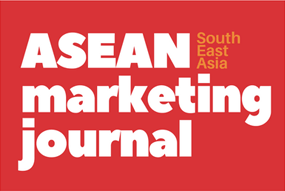
Abstract
Manuscript type: Research Article.
Research Aims: The main objective of this study is to examine the factors that affect the conversion on the food delivery application services, namely Gofood and Grabfood in Indonesia.
Design/methodology/approach: Mixed method by conducting focus group discussion and distributing questionnaires. Data analysis was done by using covariance based Structural Equation Modelling (SEM).
Research Findings: Based on the result of the FGD, there are other variables that are considered to have an influence on the conversion, namely payment design so that the latent variables studied in this study visual design, information design, navigation design, payment, and collaboration design. Based on quantitative data analysis, the output shows that information design, navigation design, payment design and collaboration design affect the conversion of Gofood and Grabfood service usages. However, the visual design does not affect the conversion of the use of Gofood and Grabfood by Muslim consumers in Indonesia.
Theoretical Contribution/Originality: This study adds one variable that affects conversion, namely payment design
Practitioner/Policy Implication: For managerial that who take cares of the service usage to improve halal features in the form of filter or sign that indicates halal at a restaurant or merchant, require each restaurant or merchant to explain the composition of the food ingredients used, improve the quality of navigation design and add payment alternative that will increase the collaboration of the using the services.
Research limitation/Implications: Demography, number of samples, difference test on Gofood and Grabfood services
Keywords: Conversion, visual design, informational design, navigational design, payment design, collaboration design, mixed-method, Gofood.
References
Adults, M. Y. (2020). Factors Influencing the Use of E-wallet as a Payment Method among Malaysian Young Adults. Journal of International Business and Management, 3(2), 1–11. https://doi.org/10.37227/jibm-2020-2-21/
Amin, H. (2017). Consumer behaviour of Islamic home financing: Investigating its determinants from the theory of Islamic consumer behaviour. Humanomics, 33(4), 517–548. https://doi.org/10.1108/H-12-2016-0102
Atulkar, S., & Singh, A. K. (2021). Role of psychological and technological attributes on customer conversion to use food ordering apps. International Journal of Retail and Distribution Management, 2020. https://doi.org/10.1108/IJRDM-09-2020-0349
Birks, D. F. (2016). Marketing research. In The Marketing Book: Seventh Edition. https://doi.org/10.4324/9781315890005
Cheng, K., Chen, Y., Larson, K., & Rolandi, M. (2017). Proving the value of visual design in scientific communication. Information Design Journal, 23(1), 80–95. https://doi.org/10.1075/idj.23.1.09che
Creswell, W. J., & Creswell, J. D. (2018). Research Design: Qualitative, Quantitative adn Mixed Methods Approaches. In Journal of Chemical Information and Modeling (Vol. 53, Issue 9).
Ghose, A., & Todri, V. (2018). Towards a Digital Attribution Model: Measuring the Impact of Display Advertising on Online Consumer Behavior. SSRN Electronic Journal, September. https://doi.org/10.2139/ssrn.2672090
Hair, J. F., Black, W. C., Babin, B. J., Anderson, R. E., Black, W. C., & Anderson, R. E. (2018). Multivariate Data Analysis. https://doi.org/10.1002/9781119409137.ch4
Islamiati, D. S., Agata, D., & Anom Besari, A. R. (2019). Design and Implementation of Various Payment System for Product Transaction in Mobile Application. IES 2019 - International Electronics Symposium: The Role of Techno-Intelligence in Creating an Open Energy System Towards Energy Democracy, Proceedings, 287–292. https://doi.org/10.1109/ELECSYM.2019.8901643
Kapoor, A. P., & Vij, M. (2018). Technology at the dinner table: Ordering food online through mobile apps. Journal of Retailing and Consumer Services, 43(April), 342–351. https://doi.org/10.1016/j.jretconser.2018.04.001
Kapoor, A. P., & Vij, M. (2020). How to Boost your app Store Rating? An Empirical Assessment of Ratings for Mobile Banking Apps. Journal of Theoretical and Applied Electronic Commerce Research, 15(1), 99–115. https://doi.org/10.4067/S0718-18762020000100108
Mubin, S. A., Poh, M. W. A., & Khuan, C. T. (2020). UEWDM navigational design: A case study of APU web attendance. Journal of Critical Reviews, 7(3), 74–78. https://doi.org/10.31838/jcr.07.03.12
O.Nyumba, T., Wilson, K., Derrick, C. J., & Mukherjee, N. (2018). The use of focus group discussion methodology: Insights from two decades of application in conservation. Methods in Ecology and Evolution, 9(1), 20–32. https://doi.org/10.1111/2041-210X.12860
Olivier, T. X. (2018). A study of factors affecting customers’ intentions to continue online shopping with mobile phones. Journal of the Southern African Institute for Management Scientists.
Shaouf, A., Lü, K., & Li, X. (2016). The effect of web advertising visual design on online purchase intention: An examination across gender. Computers in Human Behavior, 60, 622–634. https://doi.org/10.1016/j.chb.2016.02.090
Silva, A., & Stocker, L. (2018). What is a transition? Exploring visual and textual definitions among sustainability transition networks. Global Environmental Change, 50(March), 60–74. https://doi.org/10.1016/j.gloenvcha.2018.02.003
Smith, A. (2019). Consumer Behaviour and Analytics. In Consumer Behaviour and Analytics. https://doi.org/10.4324/9780429489921
Surendhranatha, R. C., & Aradhya, D. G. B. (2020). Driving Forces for the Success of Food Ordering and Delivery Apps: A Descriptive Study. International Journal of Engineering and Management Research, 10(02), 131–134. https://doi.org/10.31033/ijemr.10.2.15
Urquhart, C. (2012). The Evolving Nature of Grounded Theory Method: The Case of the Information Systems Discipline. In The SAGE Handbook of Grounded Theory. https://doi.org/10.4135/9781848607941.n16
Recommended Citation
Krisrana, Athaya Vita and Gayatri, Gita
(2023)
"ANALYSIS OF THE INFLUENCE OF ATTRIBUTE DESIGN TO CONVERSION OF THE USE OF GOFOOD AND GRABFOOD APPLICATION SERVICES BY MUSLIM CONSUMER IN INDONESIA,"
ASEAN Marketing Journal: Vol. 15:
No.
1, Article 5.
DOI: 10.7454/amj.v15i1.1303
Available at:
https://scholarhub.ui.ac.id/amj/vol15/iss1/5





